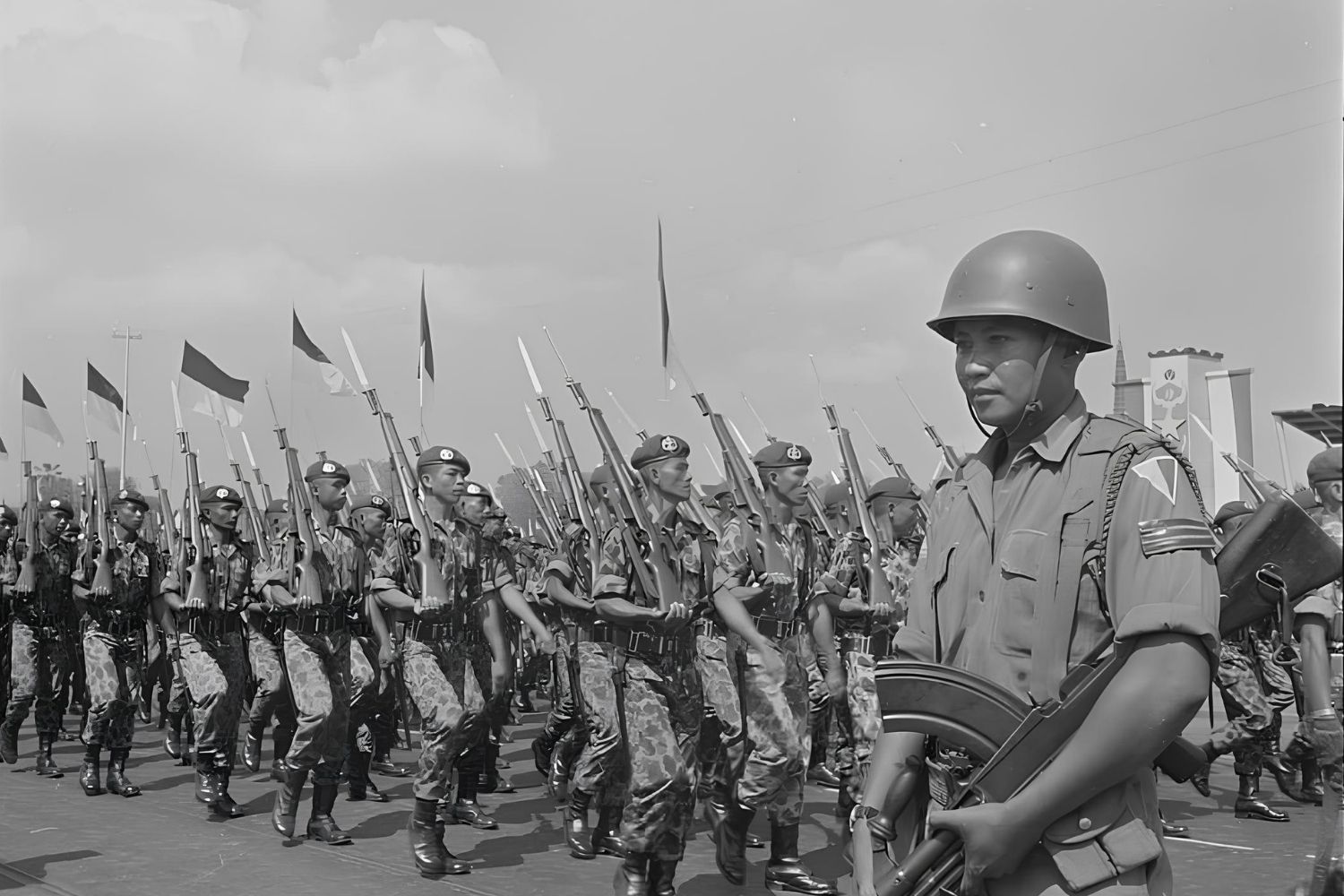
The PRRI and Permesta Rebellions were significant uprisings in Indonesia during the late 1950s. These movements were driven by regional dissatisfaction with the central government. PRRI stands for Pemerintah Revolusioner Republik Indonesia, translating to the Revolutionary Government of the Republic of Indonesia. Permesta is short for Perjuangan Semesta, meaning Universal Struggle. Both rebellions aimed to address economic disparities and political grievances. They were not just local skirmishes but involved complex alliances, including foreign support. Understanding these events sheds light on Indonesia's turbulent path to unity and democracy. Dive into these 25 facts to grasp the full scope of these historical episodes.
Key Takeaways:
- The PRRI and Permesta rebellions were movements in Indonesia during the late 1950s, driven by regional grievances and opposition to the central government, with international involvement and lasting impacts on Indonesian politics and governance.
- These rebellions showcased the struggle for regional autonomy and equitable development, shaping Indonesia's history and serving as a reminder of the importance of addressing regional disparities for inclusive governance.
The PRRI and Permesta Rebellion: An Overview
The PRRI (Pemerintah Revolusioner Republik Indonesia) and Permesta (Perjuangan Semesta) were two significant rebellions in Indonesia during the late 1950s. These movements aimed to challenge the central government and sought greater regional autonomy. Let's dive into some intriguing facts about these historical events.
Origins of the Rebellion
Understanding the roots of the PRRI and Permesta rebellions helps to grasp their significance in Indonesian history.
- The PRRI rebellion began in Sumatra in 1958, driven by dissatisfaction with the central government's policies.
- Permesta started in North Sulawesi in 1957, initially as a movement for regional development and autonomy.
- Both movements were fueled by economic disparities and political marginalization of the outer islands by the central government in Jakarta.
- The PRRI and Permesta were not initially coordinated but later found common ground in their opposition to the central government.
Key Figures in the Rebellion
Several prominent leaders played crucial roles in the PRRI and Permesta movements.
- Colonel Ahmad Husein was a leading figure in the PRRI rebellion, advocating for regional autonomy.
- Ventje Sumual, a former military officer, spearheaded the Permesta movement in North Sulawesi.
- The PRRI received support from several regional military commanders who were disillusioned with the central government.
- Permesta's leadership included influential local politicians and military officers who sought to address regional grievances.
International Involvement
The PRRI and Permesta rebellions attracted international attention and involvement.
- The United States provided covert support to the rebels, hoping to curb the spread of communism in Indonesia.
- American pilots flew missions for the rebels, including the infamous Allen Pope, who was captured by Indonesian forces.
- The CIA's involvement in the rebellions was part of a broader strategy to influence political developments in Southeast Asia.
- The Soviet Union and China supported the Indonesian central government, viewing the rebellions as threats to their interests in the region.
Military Campaigns and Battles
The PRRI and Permesta rebellions saw several significant military engagements.
- The Indonesian military launched Operation 17 August to suppress the PRRI rebellion in Sumatra.
- Permesta forces engaged in guerrilla warfare, utilizing the rugged terrain of North Sulawesi to their advantage.
- The central government deployed elite troops and air power to quell the rebellions, leading to intense battles.
- The capture of key rebel leaders marked turning points in the military campaigns against both PRRI and Permesta.
Impact on Indonesian Politics
The PRRI and Permesta rebellions had lasting effects on Indonesian politics and governance.
- The rebellions highlighted the need for greater regional autonomy and equitable development policies.
- President Sukarno used the rebellions to justify his move towards Guided Democracy, centralizing power in his hands.
- The suppression of the rebellions strengthened the Indonesian military's role in politics and governance.
- The events underscored the importance of addressing regional grievances to maintain national unity.
Legacy of the Rebellions
The PRRI and Permesta rebellions left a lasting legacy in Indonesia's history.
- The rebellions are remembered as significant challenges to the central government's authority during the early years of Indonesian independence.
- They highlighted the complexities of managing a diverse and geographically dispersed nation like Indonesia.
- The PRRI and Permesta movements are studied as examples of regional resistance against centralization and authoritarianism.
- The events of the rebellions continue to influence discussions on regional autonomy and decentralization in Indonesia.
- The legacy of the PRRI and Permesta rebellions serves as a reminder of the importance of addressing regional disparities and fostering inclusive governance.
Final Thoughts on PRRI and Permesta Rebellion
The PRRI and Permesta Rebellion remains a significant chapter in Indonesia's history. These uprisings, driven by regional discontent and political ambitions, highlighted the complexities of post-independence governance. The rebellions not only tested the young nation's unity but also showcased the determination of regional leaders to assert their autonomy. Despite their eventual failure, the PRRI and Permesta movements left a lasting impact on Indonesia's political landscape, influencing future policies and regional relations. Understanding these events provides valuable insights into the challenges faced by emerging nations and the delicate balance between central authority and regional aspirations. The PRRI and Permesta Rebellion serves as a reminder of the importance of addressing regional grievances to maintain national cohesion.
Frequently Asked Questions
Was this page helpful?
Our commitment to delivering trustworthy and engaging content is at the heart of what we do. Each fact on our site is contributed by real users like you, bringing a wealth of diverse insights and information. To ensure the highest standards of accuracy and reliability, our dedicated editors meticulously review each submission. This process guarantees that the facts we share are not only fascinating but also credible. Trust in our commitment to quality and authenticity as you explore and learn with us.
